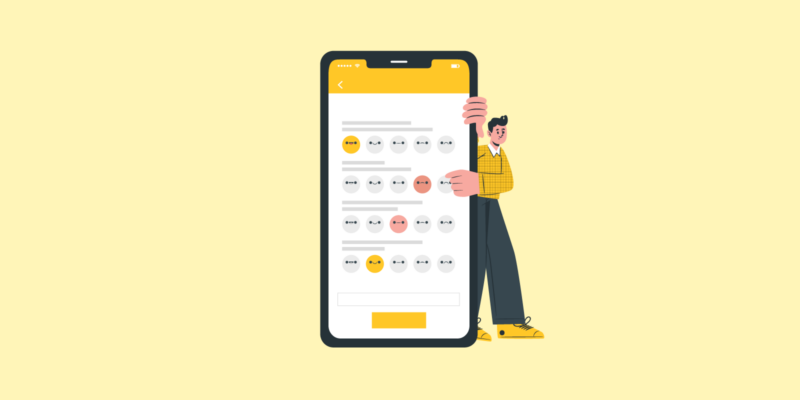How to Create a Survey to Collect Insightful Customer Feedback
You might think that you give your customers the best in everything; best customer service, best price, best products, best online presence, you name it. But, if you want to know what your customers really think about your business, there’s no better way than to collect their feedback.
That feedback serves as a guiding resource for your company’s growth and ensures you never stray too far from the needs of your customers.
It should come as no surprise that savvy businesses spend millions of dollars on setting up feedback channels — emails, reviews, feedback surveys, and website analytics.
Surveys are one of the most popular methods to collect customer feedback. They provide you with valuable insights that can help you improve your products, services, and overall customer experience. But how do you create a survey that will actually give you the information you need?
In this article
- 1. Decide What Feedback You Need
- 2. Write Clear and Concise Questions
- 3. Use Less Open-ended Questions, More Close-ended Questions
- 4. Choose the Right Survey Tool
- 5. Choose the Right Distribution Method
- 6. Pay Attention to the Timing
- 7. Offer Incentives
- 8. Be Less Intrusive
- 9. Test Your Survey
- 10. Thank the Respondents
- Wrapping Up
1. Decide What Feedback You Need
First, decide what type of feedback you want to collect. Do you want to know what customers think of your products or services? Do you want to find out what they think of your customer service? Do you want to know what could be improved?
There are many different types of surveys you can create, but the most important part is to make sure that your survey is focused on a specific topic. This will help you get more detailed and actionable feedback.
Remember to only ask questions that fulfil your end goal. Asking too many unnecessary and unrelated questions will only serve to confuse your respondents and make them less likely to complete the survey.
Some businesses make the mistake of trying to collect too much feedback at once. This can lead to survey fatigue, where customers get overwhelmed and stop responding.
To avoid this, keep your surveys short and focused on a single topic. You can always create more surveys later to cover other topics.
2. Write Clear and Concise Questions
Once you understand what kind of feedback you’re looking for, you need to focus on writing clear and concise survey questions. This is one of the most important parts of creating a survey as the quality of your questions will directly impact the quality of your results.
No one wants to spend hours filling out a survey, so it’s important to keep your questions concise and to the point.
Here are some tips for writing clear and concise questions:
- Make sure each question is relevant to your survey topic
- Avoid leading or biassed questions
- Say no to double-barreled questions
- Use simple language that can be understood by everyone
- Be clear about what you want to know
- Keep your questions short and to the point
Nextiva gives us an example of a confusing and frustrating survey question. This double-barreled question is a powerful way to get inaccurate information. A respondent might want to recommend the service/product to others, but they don’t want to repurchase it.

It’s always better to break down those two questions into separate questions, allowing respondents to answer each question independently.
If you’re not sure where to start, there are many question templates and examples available online. Woorise also offers a wide range of pre-written questions that you can use in your surveys.
3. Use Less Open-ended Questions, More Close-ended Questions
You must want the survey to be answered by as many people as possible with as much detail as possible. You might also think that those kinds of feedback give the nuggets and the actionable things that you can work on immediately. That’s why you think that it’s better to throw a lot of open-ended questions on your survey.
But in fact, close-ended questions are better in most cases because they’re quicker and easier to answer as well as provide you with more actionable data.
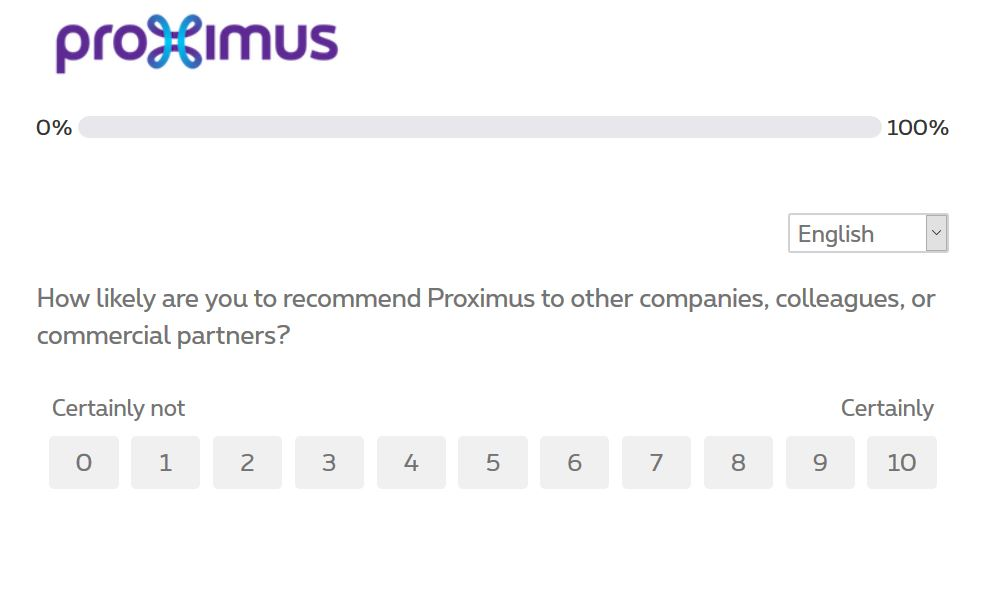
Open-ended questions can be difficult to answer, especially if customers are taking your survey on the go as there’s no fixed answer and the responder has to type their honest opinion.
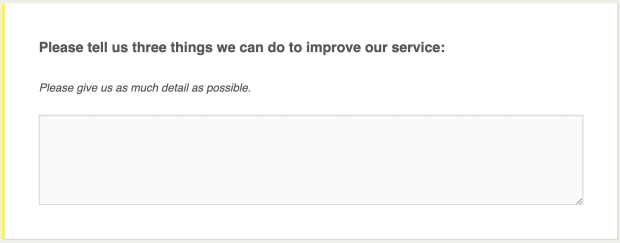
If you want to collect detailed feedback, you can always follow up with open-ended questions after customers have completed your close-ended questions.
Here are some tips for writing close-ended questions:
- Use a scale (e.g. “Very Satisfied” to “Very Unsatisfied”)
- Offer multiple choice answers
- Use drop-down menus
- Keep questions short and to the point
Not to mention that close-ended questions are easier to analyze as they provide you with quantifiable data that you can use to make decisions. Meanwhile, open-ended questions can be difficult to answer and often provide you with unstructured data.
To get the most out of your survey, try to limit open-ended questions to no more than three or four. It’s important to strike a balance between close-ended and open-ended questions. This will help you to collect the most actionable data from your customers.
4. Choose the Right Survey Tool
Now that you know what type of feedback you want to collect, it’s time to choose a survey tool. There are many different options available, so it’s important to choose one that best fits your needs.
A robust survey tool will not only help you to create and distribute your surveys but will also provide you with valuable insights and data analysis.
Some of the features you should look for in a survey tool include:
- The ability to create custom surveys
- A wide range of question types
- Real-time results and data analysis
- Detailed reports and exportable data
- 24/7 customer support
One of the most popular survey tools is Woorise, which offers all of the features mentioned above. Whether you’re a complete newbie or a seasoned pro, Woorise makes it easy to create beautiful and effective surveys.
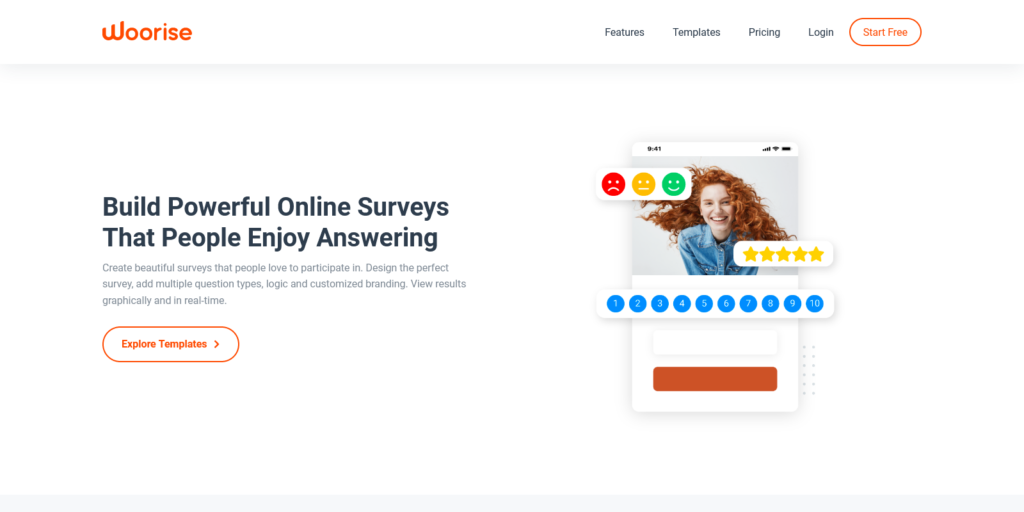
5. Choose the Right Distribution Method
Now that you’ve created your survey, it’s time to choose a distribution method. There are many different ways to distribute surveys, so it’s important to choose the one that best fits your needs.
Some of the most popular methods include:
- Social media
- Website or blog
- In-person
- Printed materials
Email is one of the most popular methods for distributing surveys, as it’s quick and easy to do. You can simply send your email survey to a list of email addresses and wait for responses to come in.
Social media is another great option, as you can reach a wide audience with just a few clicks. You can post your survey on your social media accounts or use paid advertising to promote it.
Website or blog is another option, but it’s important to make sure that your survey is visible and easy to find. You can add a link to your survey in the sidebar or footer of your website.
In-person surveys are also a great option, especially if you’re surveying customers in a brick-and-mortar store. You can simply ask them to fill out your survey before they leave.
Printed materials are a great option for offline surveys. You can print your survey on flyers or posters and distribute them in public places.
Once you’ve chosen a distribution method, it’s time to launch your survey. Make sure to promote it as much as possible to encourage people to take it.
6. Pay Attention to the Timing
One of the most important aspects of surveying is timing. You need to make sure that you’re surveying people at the right time in order to get accurate results.
For example, if you’re surveying customers about their recent purchase, it’s important to do it shortly after they’ve made the purchase. This will ensure that their memory is fresh and that they can give you accurate information.
Meanwhile, when you’re a SaaS company, you can ask for a survey about customer satisfaction after they sign up and you offer them onboarding or training videos.
If you’re surveying customers about an upgraded feature policy, it’s important to do it after the upgrade has been made. This will ensure that they’ve had enough time to use the feature and can give you accurate feedback.
Below is an example of a perfect-timing survey from ThumbStack. They make sure that their users have a chance to try out their app in the first place, then ask them about their experience.
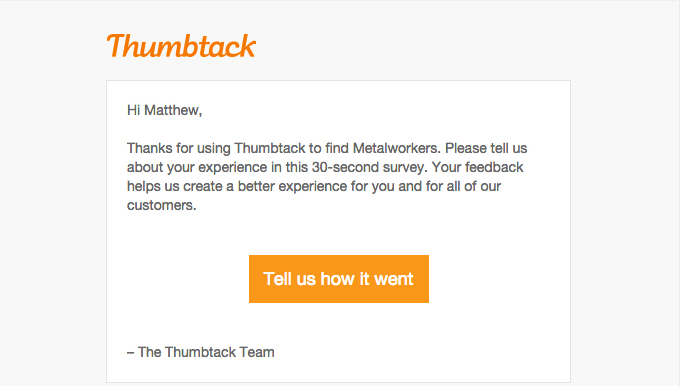
7. Offer Incentives
One of the best survey ideas is to encourage people to take your survey is to offer incentives. This can be anything from a discount on their next purchase to a free gift.
You can also enter respondents into a prize draw or competition. This is a great way to increase participation and get accurate feedback. But, you need to remember that the key here is to find a balance between incentivizing customers enough that they take your survey without giving away too much that it becomes too expensive.
Your business should handle whatever incentives you offer. It can be as simple as a gift card or a percentage off their next purchase or even a free trial, rather than giving away the farm only for unrelated gifts.
Take a look at how Home Depot nailed its survey incentives by offering $5,000 Home Depot gift cards. Not only will this encourage more people to take the survey, but also convince people to continue their interest in the business.
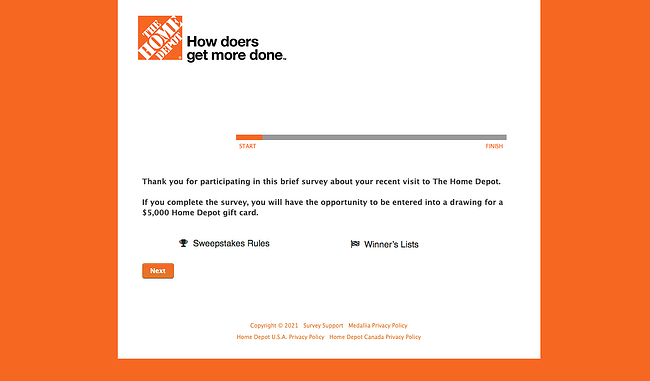
8. Be Less Intrusive
No one ever goes online and says, “Let’s see what survey I can complete today” unless they are getting paid to do so. Surveys can be intrusive, so it makes sense why most of us don’t like feeling like we’re being spammed and bombarded with surveys.
In this case, you need to make sure that you’re being as unobtrusive as possible. Being less intrusive is so much more than just not being annoying or too desperate. You also need to make sure that you’re not taking up too much of the respondent’s time.
There are a few ways to do this:
- Don’t send too many reminders about the survey. Once or twice should be enough.
- Don’t make the survey too long. People are more likely to take a short survey than a long one.
- Don’t make the questions too personal. Avoid asking for things like contact information or social security numbers.
- Give respondents the option to skip questions that they don’t want to answer.
9. Test Your Survey
No matter how brilliant your survey questions are and how intriguing the incentives you offer, if a respondent can’t even take your survey, all of your efforts will be for naught.
That’s why it’s so important to test your survey before you launch it. Send it to a few friends or employees and see if they can take it without any issues.
Check that all of the links work and that the survey is compatible with all browsers and devices. Once you’re sure that everything is working properly, you can launch your survey with confidence.
10. Thank the Respondents
Once your survey is complete, it’s important to thank the respondents for their time. This small yet impactful gesture shows that you value their feedback and appreciate their input, convincing them to take another survey from your business in the future.
You can send a thank-you email to all of the respondents or include a thank-you message on the survey results page.
Thank you emails don’t have to be long. This one from FitStar is a great example of it. With concise and straightforward copy, the brand knows that the key here is to make sure that their respondents understand how much their thoughts and opinions matter.
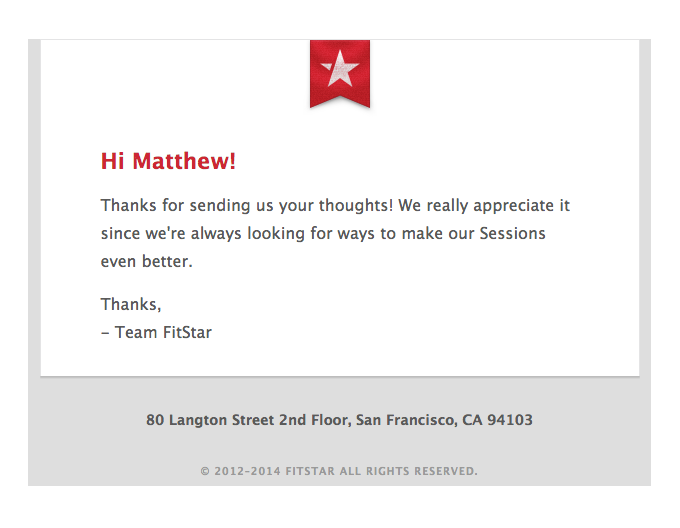
Wrapping Up
Customer feedback is key to any business. Without it, you’ll have no way of knowing what your customers want or how they feel about your product.
Creating a survey is a great way to collect customer feedback. But, not all surveys can be created equal. Just like any other thing in the marketing field, if you want your survey to be successful, there are a few things you should keep in mind.
Also, remember that asking for feedback from your customers should be an ongoing process, not a one-time event. You should constantly run surveys so that you can make the necessary changes to keep your customers happy.


